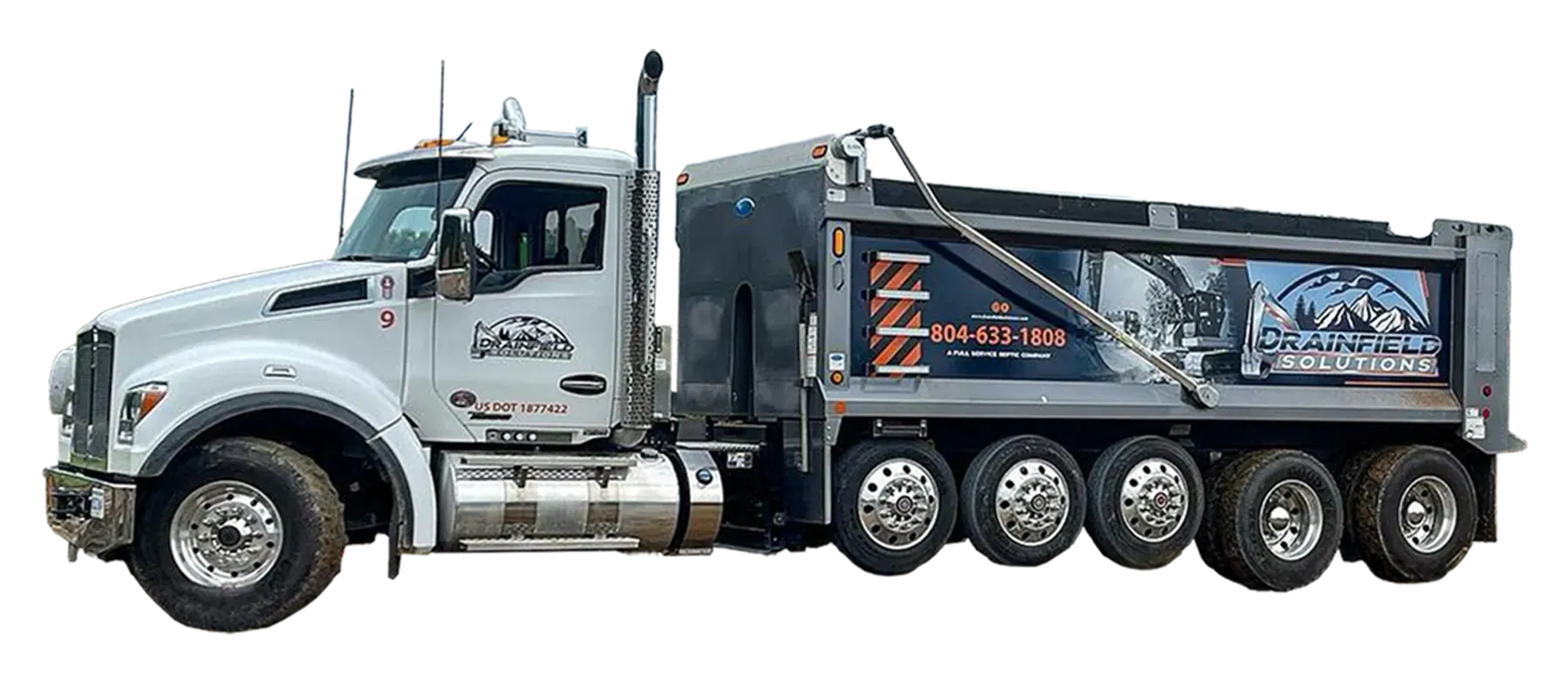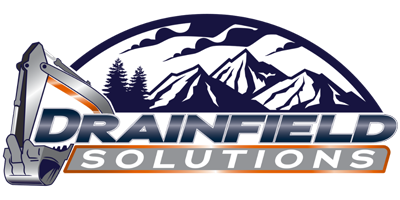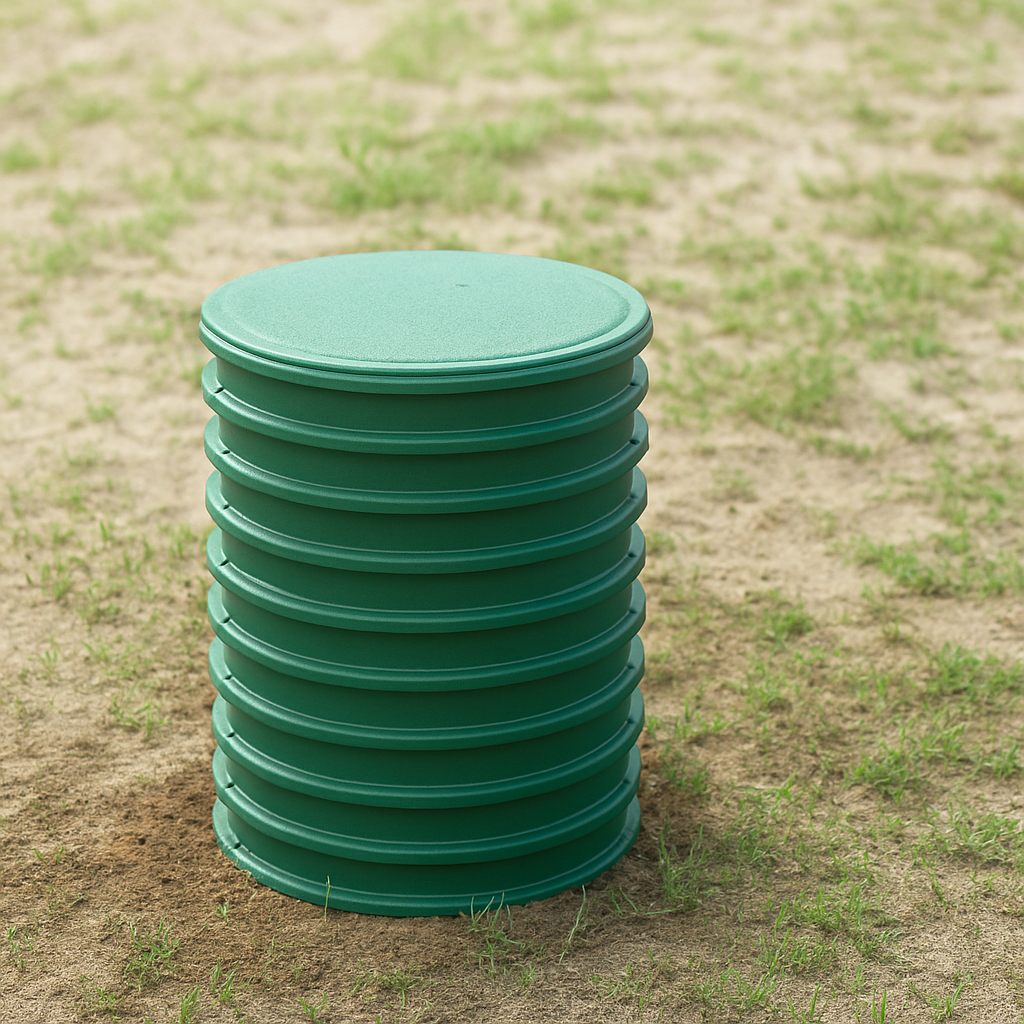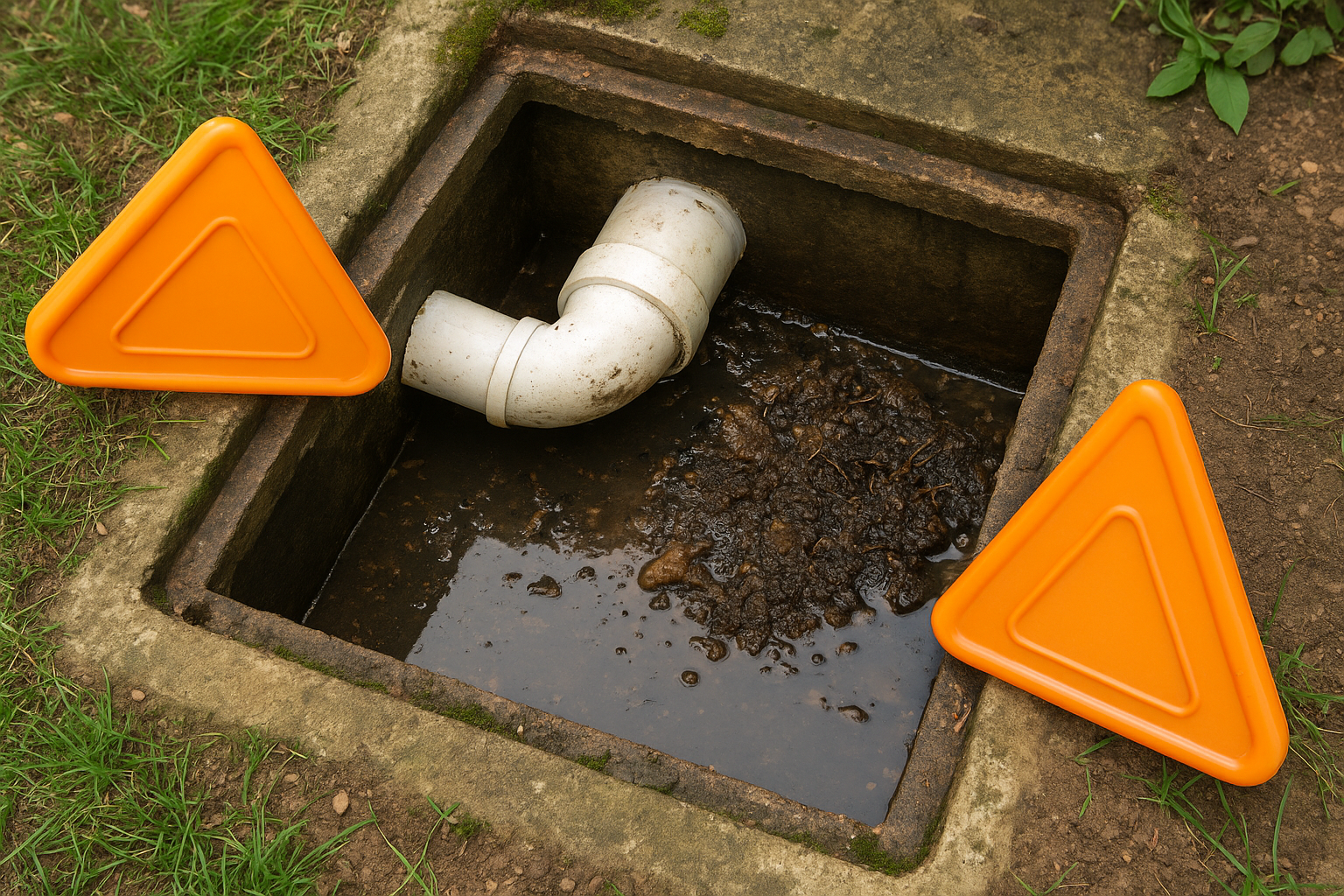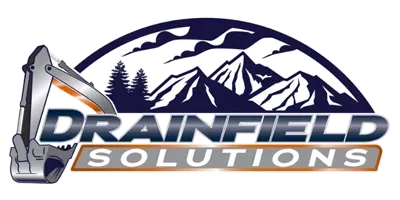
10 Causes of Drainfield Failure & How to Fix Them.
January 11, 2025
When your drainfield starts acting up, it’s not just a plumbing problem—it’s a backyard horror story waiting to happen. That soft squishy patch in the yard? Not rainwater. The faint whiff of something not-so-pleasant? Not your neighbor’s barbecue. If you catch these signs early, you might just save your septic system—and your wallet.
Let’s break down the most common causes of drainfield failure, one by one, and more importantly—how to stop them before they wreck your entire septic setup.
1. Clogged Pipes and Sludge Buildup
- The Cause: Over time, sludge and grease can clog the pipes that feed your drainfield, blocking wastewater from flowing freely. Imagine trying to drink a milkshake through a coffee stirrer—it’s not happening.
- What to Watch For: Slow drains, gurgling sounds, or backups in toilets and sinks are early warnings. Outside, look for soggy ground or lush green patches near the drainfield.
- How to Fix It: Schedule regular septic tank pumping every 3–5 years. If clogs have already formed in the drain lines, jetting or snaking the lines may be necessary. In more advanced cases, pipe replacement might be unavoidable.
💡Bonus Tip: The 🔗EPA recommends routine pumping and avoiding chemical drain cleaners, which can worsen clogs and harm beneficial bacteria.
2. Overloading the System with Water
- The Cause: Too many laundry loads in one day, long showers, or running multiple water-heavy appliances at once can flood your drainfield. This hydraulic overload forces water out before it’s properly treated.
- What to Watch For: Water pooling in the yard, slow-draining sinks, or a septic alarm sounding off after heavy water use.
- How to Fix It: Spread out water usage throughout the week. Consider installing low-flow fixtures and high-efficiency appliances. For larger households, upgrading the size of your system may be necessary.
💡Pro Insight: The 🔗Virginia Department of Environmental Quality recommends water conservation strategies to protect septic systems long-term.
3. Roots Invading the Drainfield
- The Cause: Tree roots are nature’s version of little plumbing pirates—they’ll hijack any pipe that promises water. Over time, they can crush or clog pipes and cause extensive damage.
- What to Watch For: Soggy or uneven spots in your yard, or trees and shrubs suspiciously thriving near your septic area.
- How to Fix It: A professional can use a sewer camera to confirm root intrusion. Root cutting or hydro-jetting may clear the lines temporarily, but permanent fixes often include rerouting the system or removing invasive trees.
4. Driving or Parking Over the Drainfield
- The Cause: Your drainfield isn’t a driveway. Heavy vehicles compact the soil and crush pipes, preventing wastewater from filtering into the soil.
- What to Watch For: Visible depressions, compacted soil, or system backups soon after construction work or guest parking on the grass.
- How to Fix It: Prevent future damage with clear signage or barriers. If pipes are crushed, you’ll need excavation and pipe replacement.
5. Improper Septic System Design or Installation
- The Cause: Systems built too small for the home, placed in poor soil, or installed without proper slope can fail prematurely—sometimes within a few years.
- What to Watch For: Chronic problems even after repairs, like backups or standing water, may point to design flaws.
- How to Fix It: Consult a licensed septic designer or engineer. You may need a redesigned drainfield or an advanced treatment unit tailored to your property’s needs and soil conditions.
✅Fact Check: According to the 🔗EPA’s septic system guide, soil characteristics and sizing must be evaluated carefully before installation.
6. Poor Soil Percolation
- The Cause: Some soils—like clay-heavy or compacted types—don’t drain well. If wastewater can’t properly filter through the soil, it backs up and saturates the drainfield.
- What to Watch For: Standing water, slow drainage, or a drainfield that stays soggy long after rain.
- How to Fix It: A professional can conduct a percolation test to check your soil’s absorption rate. If it’s too slow, you may need a raised bed system, a sand filter, or a mound system. These alternatives help meet state and federal standards for wastewater treatment, like those outlined by the 🔗EPA.
7. Lack of Maintenance
- The Cause: Skipping regular septic inspections and pump-outs is like ignoring oil changes in your car. Eventually, something’s going to break down—spectacularly.
- What to Watch For: If you don’t remember the last time your tank was pumped, chances are it’s overdue. Sludge buildup leads to solids escaping into the drainfield, where they don’t belong.
- How to Fix It: Get on a regular pumping and inspection schedule. Most systems need service every 3–5 years, though high-usage households may need it more often. The 🔗EPA’s guide to septic care offers a clear breakdown of what homeowners should do annually.
8. Chemical Damage to Beneficial Bacteria
- The Cause: Septic systems rely on beneficial bacteria to break down waste. Flushing harsh chemicals like bleach, disinfectants, or antibiotics can wipe out these microbes.
- What to Watch For: An unexplained odor, slow drainage, or backups after introducing new cleaning products could be signs your system’s biological balance is off.
- How to Fix It: Switch to septic-safe cleaners. Avoid flushing medications, harsh chemicals, or antibacterial wipes. In severe cases, bacterial additives or professional reseeding might help rebalance the system.
- Tip: The 🔗Virginia Department of Health advises homeowners to use environmentally friendly products and never dispose of hazardous materials through drains.
9. Aging System Components
- The Cause: Nothing lasts forever. Systems older than 25–30 years may simply be worn out—pipes corrode, drainfield trenches collapse, and tanks deteriorate.
- What to Watch For: Frequent repairs, recurring backups, or persistent wet spots could mean your system is at the end of its life cycle.
- How to Fix It: Have a licensed septic contractor evaluate the entire system. They can assess what can be repaired and what needs to be replaced. A full system replacement, while costly, may be the safest long-term solution.
10. Grease and Non-Biodegradable Waste
- The Cause: Pouring grease down the drain or flushing non-biodegradable items (like wipes, diapers, and feminine hygiene products) clogs up the works fast. These items don’t break down and can create solid blockages.
- What to Watch For: Sudden slowdowns in drainage or backups after big cooking events.
- How to Fix It: Never pour grease down your drain. Let it solidify and dispose of it in the trash. Use sink strainers and educate your household on what not to flush. The 🔗EPA reinforces that “only water, waste, and toilet paper” should go down the drain.
When to Call in the Pros
If you're seeing warning signs from any of the issues above, don’t wait. The earlier you act, the better chance you have of avoiding a full system failure. Licensed professionals can evaluate your system, perform inspections, and offer modern solutions to upgrade or repair aging drainfields.
For Virginians, the 🔗Virginia DEQ and 🔗Virginia Department of Health offer resources on local regulations, system types, and licensed professionals in your area.
Final Thoughts: Don’t Let Small Problems Grow Roots
A failing drainfield isn’t just messy—it’s a health hazard and a financial sinkhole. But with the right knowledge, consistent maintenance, and a trusted septic partner, you can catch problems early, fix them fast, and keep your system flowing smoothly for decades.
Need help diagnosing a suspicious drainfield? Don’t guess—call the experts before your lawn becomes a biohazard zone.
Why Choose Drainfield Solutions?
At Drainfield Solutions, we’ve been helping homeowners in Caroline County, Spotsylvania County, Hanover County, Stafford County, King George County, and Louisa County protect their septic systems since 2005. Whether it’s diagnosing gurgling noises, addressing biomat buildup, or fixing a septic system overload, our family-owned and operated business has the expertise to get the job done right.
Call us today at 📞804-633-1808 or visit 🔗our contact page to schedule an inspection or learn more about protecting your septic drain field. With the right care and support, your drain field and septic system can stay healthy and reliable for years to come!
Frequently Asked Questions
Share Post
Latest Posts
Ready to Take the Next Step?
Whether you're in need of a system inspection or regular maintenance, Drainfield Solutions is here to help. Get in touch today for reliable service you can trust.
